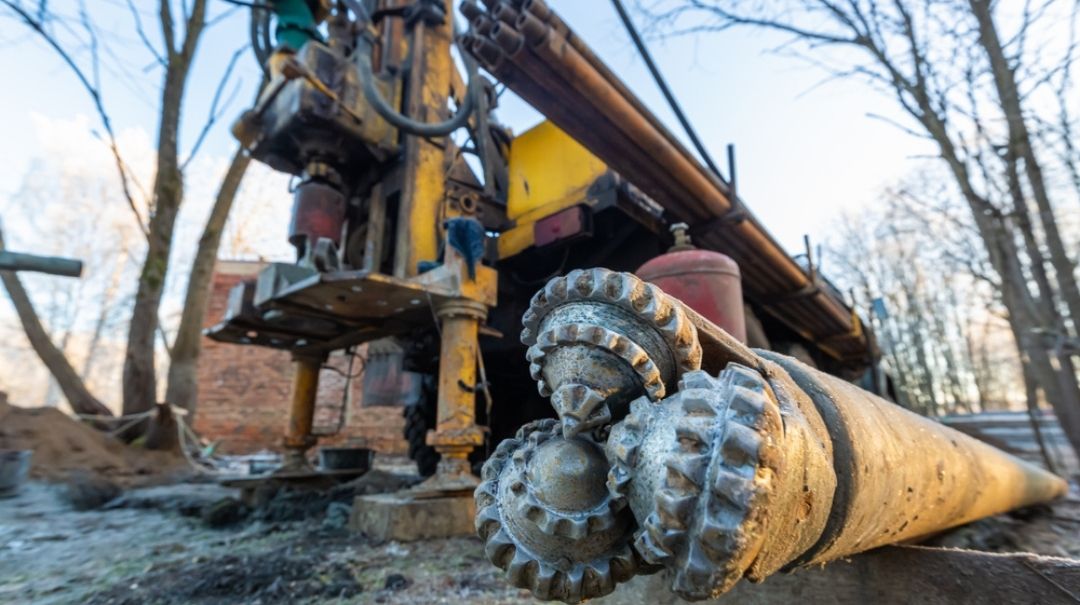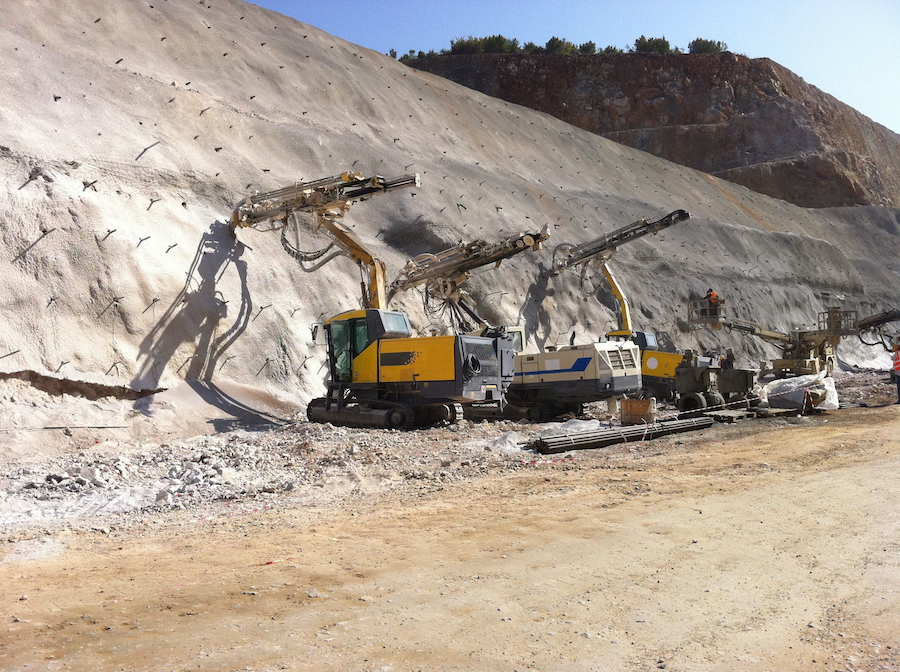Everything You Required to Understand About Geotechnical Engineering for Your Following Job
Everything You Required to Understand About Geotechnical Engineering for Your Following Job
Blog Article
A Thorough Introduction of Geotechnical Design Techniques and Their Effect On Modern Civil Engineering Projects
Geotechnical engineering offers as the foundation of modern-day civil design, giving important techniques that resolve the complexities of subsurface conditions. The interplay of dirt analysis, structure layout, and innovative innovations forms the integrity and sustainability of facilities tasks.
Importance of Geotechnical Engineering
Geotechnical engineering functions as a crucial structure for civil engineering jobs, affecting the safety and stability of frameworks. This self-control concentrates on the behavior of dirt and rock materials, offering vital insights that lead the style and construction processes. By understanding the interaction in between the planet and crafted structures, geotechnical designers can evaluate dangers connected with ground conditions, such as settlement, incline stability, and liquefaction.
The value of geotechnical design prolongs past mere structural honesty; it plays a crucial duty in environmental management and sustainability. Correctly performed geotechnical analyses make certain that projects minimize their ecological footprint and adhere to regulatory needs (geotechnical engineer description). Geotechnical engineering is instrumental in website choice, making it possible for designers to identify suitable areas for building that alleviate prospective risks.
On top of that, geotechnical design fosters innovation in civil engineering by advancing methods for ground enhancement, structure style, and excavation. The technique's contributions are important in attending to difficulties postured by differing soil conditions, hence facilitating efficient and risk-free infrastructure growth. On the whole, the relevance of geotechnical design is vital in making sure that civil design jobs are not only possible but additionally resistant against synthetic and all-natural misfortunes.
Secret Methods in Geotechnical Design

An additional essential strategy is dirt stabilization, which involves changing dirt buildings to boost load-bearing ability or minimize negotiation. Approaches such as including cement, lime, or making use of geosynthetics are commonly made use of to accomplish soil improvement.
Ground renovation strategies, consisting of dynamic compaction and vibro-replacement, are also important. These methods aim to densify soft or loose dirts, improving their stamina and minimizing liquefaction possibility in seismic locations.
Retaining frameworks, such as sheet stacks and soil nailing, are used to sustain excavations and stop soil movement. Slope stabilization methods, including drain systems and keeping walls, are essential for reducing landslide dangers.

Dirt Evaluation and Checking Methods
Reliable soil evaluation and testing methods are crucial for comprehending the chemical and physical residential or commercial properties of soil, which directly affect engineering choices. A detailed analysis of dirt characteristics is essential for predicting actions under various loading conditions and environmental influences.
Typical dirt testing approaches consist of both area and laboratory techniques. click for more info Field examinations, such as the Standard Infiltration Test (SPT) and Cone Infiltration Examination (CPT), offer immediate understandings right into soil stratification, thickness, and strength. These tests help designers evaluate website conditions effectively before even more extensive lab evaluations.
Laboratory testing approaches, such as Atterberg limits, grain size circulation, and compaction tests, are important for determining soil plasticity, dampness content, and optimal compaction levels. Progressed techniques like triaxial tests and combined undrained (CU) tests provide beneficial information on shear strength and reliable stress and anxiety specifications.
Chemical testing, including pH, electrical conductivity, and organic material analysis, is likewise important for comprehending potential soil contamination and its effect on building products. Collectively, these dirt evaluation and screening approaches form the structure of notified decision-making in geotechnical design, guaranteeing the security and stability of modern-day civil design tasks.
Foundation Style Approaches
Structure layout approaches are crucial in making sure the security and longevity of structures. These approaches can be categorized into shallow and deep foundations, each suited to specific dirt conditions and loading scenarios. Superficial foundations, such as spread grounds and mat structures, are normally utilized when surface area dirts have ample bearing capacity. They distribute the lots over a bigger location, reducing settlement threats.
On the other hand, deep foundations, including stacks and drilled shafts, are employed when surface soils are inadequate or weak for sustaining the framework. These foundations transfer lots to much deeper, much more steady soil or rock layers, making them vital for skyscrapers and bridges in tough geotechnical problems.
Choosing the ideal structure layout includes complete geotechnical investigations, including dirt composition, bearing ability, and groundwater conditions. Designers must consider aspects such as negotiation, side loads, and possible seismic task to make certain the foundation's efficiency over time.
Inevitably, a well-executed foundation design is an essential facet of civil engineering, straight affecting the safety and security, toughness, and performance of structures. all about geotechnical engineering. By aligning structure types with site-specific problems, engineers can efficiently alleviate dangers linked with structure failing
Technologies Shaping Civil Design

Lasting materials, such as high-performance concrete and recycled aggregates, are additionally obtaining traction, useful reference advertising environment-friendly techniques while keeping structural honesty. Additionally, advanced geotechnical techniques, such as ground improvement and deep mixing methods, are boosting the security of foundations in difficult dirt problems.
Furthermore, using drones and remote sensing technology is enhancing site surveying and monitoring, supplying real-time information that aids in handling construction progress and safety and security. The implementation of innovative building techniques, such as modular and prefabricated construction, further speeds up project timelines and lowers waste. Collectively, these advancements are not just changing civil engineering methods yet additionally ensuring that modern infrastructure fulfills the demands of an expanding international populace while resolving ecological issues.
Verdict
Finally, geotechnical design techniques are important to the success of modern-day civil engineering tasks. The application of site investigation, dirt stablizing, and ground enhancement techniques ensures the safety and stability of infrastructure. Technologies such as Building Details Modeling (BIM) and progressed tracking modern technologies even more improve task performance and accuracy. By utilizing these techniques, engineers can mitigate threats and add to the development of resistant city environments, eventually fostering lasting growth and security in civil engineering techniques.
Geotechnical engineering offers as the backbone of modern civil design, giving vital techniques that resolve the intricacies of subsurface conditions.Geotechnical design offers as an important structure for civil design projects, affecting the security and stability of structures.In addition, geotechnical engineering cultivates advancement in civil engineering by progressing techniques for ground improvement, structure style, and excavation. Overall, the value of geotechnical engineering is paramount in making sure that civil design jobs are not only possible but likewise durable against man-made and all-natural hardships.
In verdict, geotechnical engineering techniques are essential to the success of contemporary civil engineering projects.
Report this page